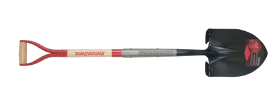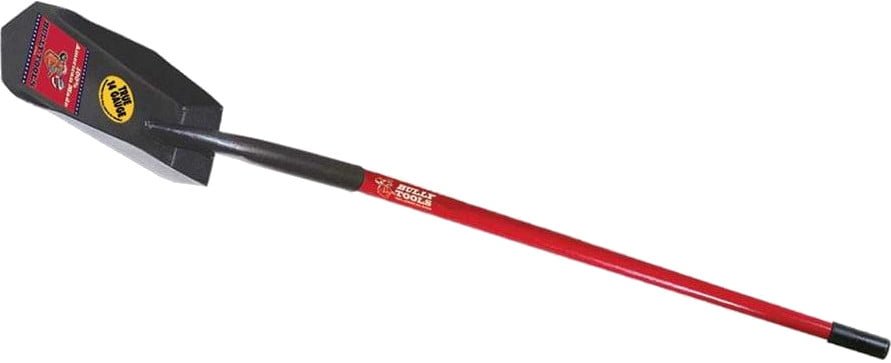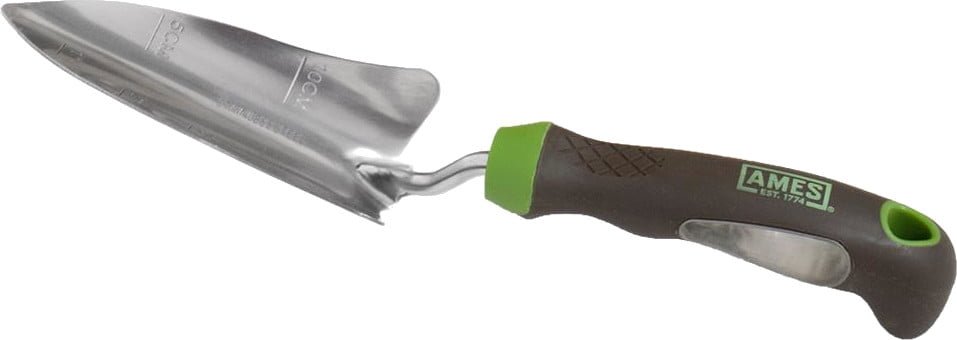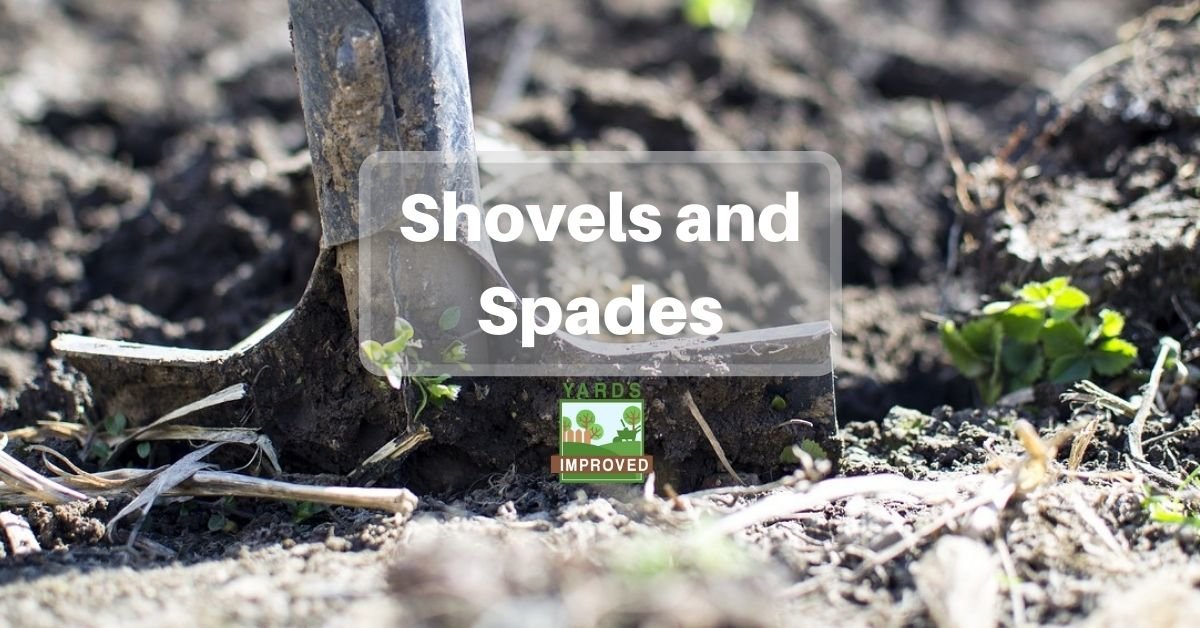When you need to dig a hole, you just grab a shovel, and one is as good as another, right? Wrong! There are actually a lot of types of shovel, each designed for a different purpose. The shape of the blade helps make it work well for a particular task. The size of the handle is about more than convenience; it gives the right leverage for the job.
Looking for snow shovels? Find them here!
From trowels to trenching shovels, there are all sizes and styles of tools that fall into the general category of shovels. Several of them are going to be of use for your yard and garden work. But what are the different types and what are they built for?
Nowadays, “shovel” and “spade” are used interchangeably. There’s a technical difference but in common usage, it’s rare to see them consistently used correctly. Even major companies use them as if they were the same thing. Still, we’ll explain the difference even though you’ll see later on how hard it is to keep them straight.
A shovel generally has a longer handle than a spade. Also, the blade is “deeper”, more like a scoop. This lets it hold more dirt or other material. That makes the shovel ideal for moving dirt or other material. An easier way to remember it might be that “shovel” and “move” have three letters in common.
A spade, on the other hand, has a flatter blade and a shorter handle. It is designed for digging and breaking up soil or other material. Since the edge is flat, it’s also great for creating a straight edge. A spade often has a “D” or “T”-shaped handle.
The blade of either a shovel or a spade can be square, rounded, or pointed.
A trowel is a smaller tool used for gardening. It has a curved blade like a shovel to help move soil but also is good for breaking up the ground on a small scale.
Breakdown of Shovels, Trowels, And Spades
Beyond these general categories, there are more specific types of shovels and spades that you’ll come across. While you can often make do with the “wrong” type for your project, using the right one will make things go more quickly and easily.
Garden Spade
As its name implies, the garden spade is your most basic digging tool for your yard and garden – even though it’s often called a garden shovel. Generally, a garden spade or shovel is short-handled with a D-handle. It also has a relatively flat blade.

Read our reviews of the best garden spades!
The tool is perfect for turning over soil and breaking up small roots as you go. Since the blade is almost flat, it will also mark great and even edges to your garden bed. It’s also great for edging along the sidewalk or driveway.
Transplanting spade
When you need to move a plant from one location to another, a transplant spade is your best bet.

This tool often has a shorter handle than shovels and even than spades. However, the blade is long and narrow so that it can get all the way under the roots of a plant. The slightly-curved blade will help hold the root system as you move it to your wheelbarrow or directly to its new location.
Find out the best time to plant your vegetables!
Scoop shovel
The scoop shovel has the deepest curve to the blade. That means it can hold more of whatever you need to move.

If you have to transfer large quantities of soil or gravel, this is the best choice, since each shovelful will contain more material. It can also be fantastic to help load compost into your wheelbarrow.
Trenching shovel
A trenching shovel is not as commonly needed for the average homeowner, but can come in handy in certain situations. As the name implies, it’s the perfect tool for digging small trenches or ditches.

The blade is square but narrow, allowing you to reach hard-to-get-to spaces. It can work like a transplanting shovel. But it’s best if you have to create routes for water to flow, either for irrigation or for drainage.
Trowel
A trowel is a small tool that you’ll usually be using at the level of individual small plants. The blade is usually about 6 inches long and 2 – 3 inches wide.
You’ll likely be using this for the nitty-gritty work of your gardening. It’s helpful for weeding, transplanting small plants, and breaking up tiny roots.

There are many other types of shovel out there, too, but these are the main ones you may need. There are also two “styles” that you’ll come across. Each has its own advantages. Many other types of shovel and spade can fall into either a square point or round point.
Best Garden Trowels Reviewed!
Square Point
Almost all spades have a square point, but some shovels do, as well. These are perfect for creating sharp edges. They’re also good for getting work done more quickly since they can turn over more dirt more quickly.
Round Point
Sometimes, though, you might have to cut through roots or harder, drier soil. That’s where a round point shovel can come in handy. The narrow edge can help penetrate tougher material. Some are more pointed than rounded and even more effective of breaking up clumps of soil, roots, or other harder obstacles.
Conclusion
A basic garden shovel or spade and a trowel will serve most of your gardening and lawn-care needs. But there are other types of shovel, too, and knowing what they are and what they’re good for can help you with various projects. Choosing the right tool for the right job will provide better results and lessen the work involved!









